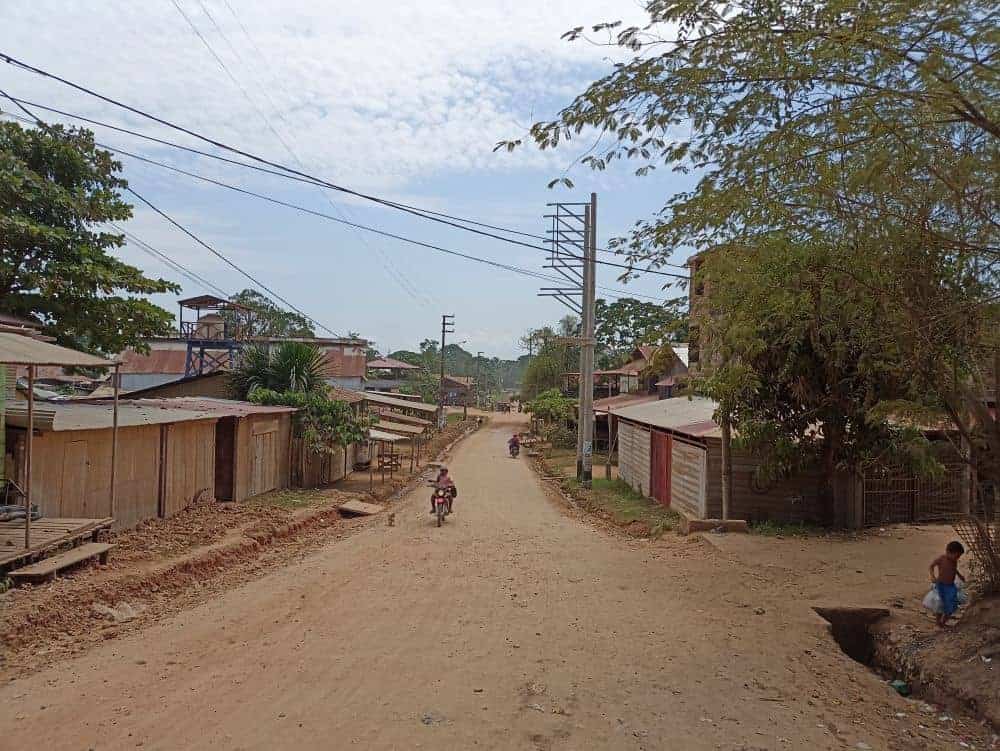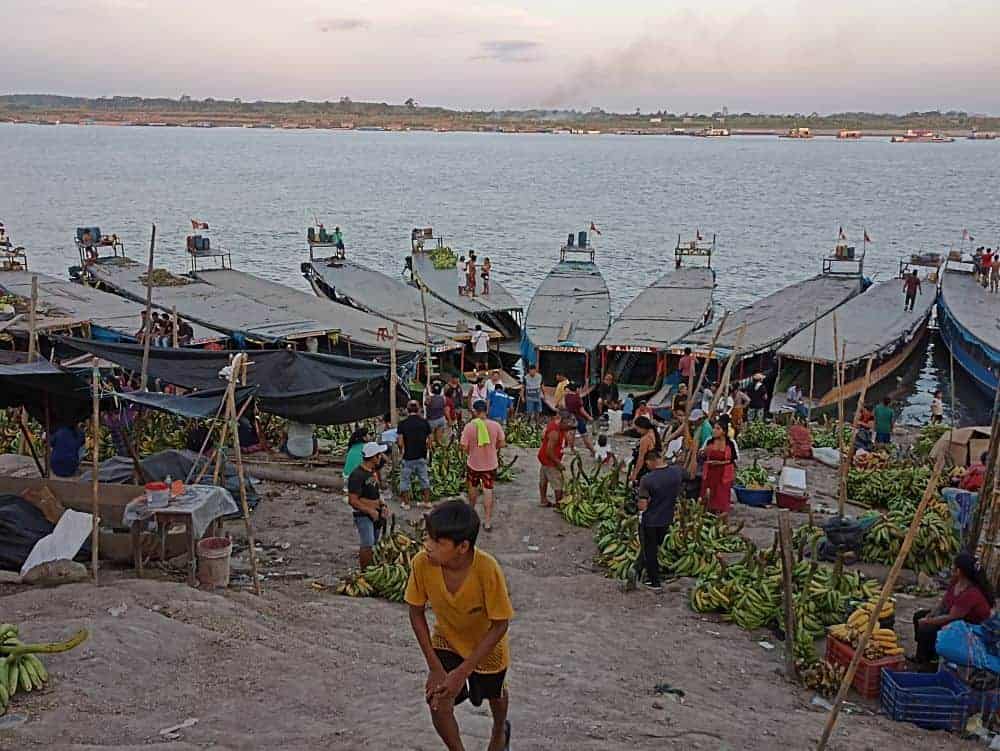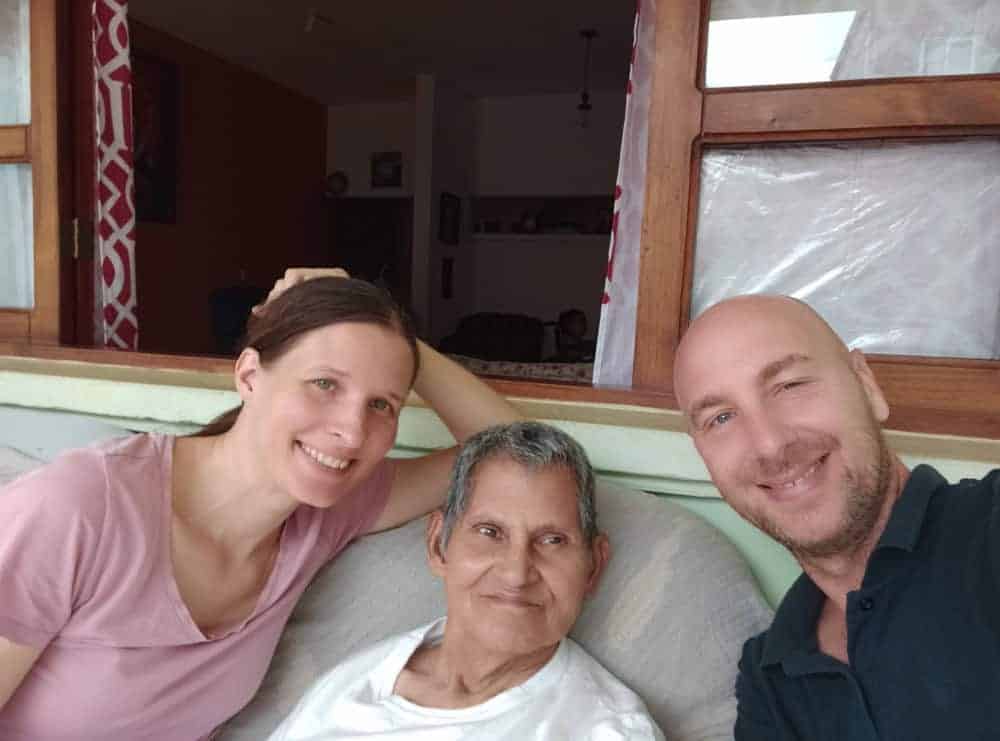The name “Pucallpa” comes from the Quechua language “Puka Allpa” – meaning “red soil.” The city lies in the eastern part of Peru, on the bank of the Ucayali River. This river represents the largest tributary to the Amazon.
Pucallpa is the only metropolitan city in the Ucayali region, an area of the Peruvian Amazon rainforest. In 2013, the city had a population of about 200,000 inhabitants. Today, there are more than half a million.

The Problem of “Development”
Land is being sold at a premium and it is obvious that the authorities want to attract even more people to the city. More houses and entire neighborhoods are being built. Administrators want to attract more investors. They want development. Unfortunately, they – hand to heart – do not do it well.
The fact is that the population settles faster than the city can keep up with infrastructure. Apart from the main roads and the area around the city center, everything is still underdeveloped.

City canals and runoffs that are planned for the rainy season are, in many places, full of sewage. The riverbeds are clogged as people throw plastic and waste into them.
This, of course, poses a problem during the rainy season, since water does not drain into the riverbeds, but accumulates there. Because the riverbeds are clogged with dirt, the water floods across.
“When they dump plastic bottles, cans, plastic bags into channels, people don’t remember that riverbeds will clog up and that this will flood their yards when the rain comes,” Gabriele the artisan told us. “They will deal with the flood when they are confronted with it.”
When the streets are full of water, people just stay at home. Children do not go to school, and adults do not go to work.
As is customary for Peruvians, problems are solved by improvisation as they occur. The people tend not to think very far in advance. I imagine wandering through flooded streets as everyone pumps water out of their houses however they can.
Politics in Pecullpa
Why the authorities in the city are not solving this problem now during the dry season is beyond me. They could be solving the root problem once and for all. When we talk to people here, we mainly hear about corruption and the flow of money into the pockets of those who dominate the city.

In Pucallpa, everything is full of unfinished projects. Sometimes a project stalls simply because it is poorly planned and organized at the start.
Other projects start out with the highest ambitions but have been standing for years without progress. Money that probably once came to the city treasury for some good or useful purpose slowly sank into the pockets of a handful until it ran out, leaving construction unfunded.
It looks as though people here are used to this and no longer deal with it at all. If you ask them, they just shake their heads.
I do not think they even have time to think about the politics and development of the city because everyone has to struggle for their own survival. This is something that stands out quickly to us coming from outside of the community.
The Life of the People
The people are not lazy – far from it. They are busy with countless problems. They must survive and know full well that the social, political, and economic system is not in their favor. They need to rely on their own ingenuity and on the people around them – their family and friends.

For example, they cannot count on a pension or on health insurance to cover the cost of medicine in the event of injury or illness. Health insurance is available, some plans are even very good, but most people cannot afford them. Mutual social and pension insurance, as we know it, does not exist in Peru.
How, then, can ordinary people monitor city policy, plans, and development? How should they participate and, more generally, how can they critically watch politicians when they are busy working for themselves and their children around the clock?
The Pecullpa Economy
Otherwise, the city mainly lives on grocery stores (fruit and other produce) and from the sale of timber. Years ago, tourism was also an economic driver. This is certainly no longer the case today. Tourists mainly come to Pucallpa for a short stop as they travel further to Iquitos. This city has to offer tourists much more.

Eco-tourism was among Pucallpe’s top tourist attractions, with its natural wildlife and nature park (El Parque Natural). Even a few years ago, it was the pride of the city – something that tourists visited first. Unfortunately, today this park is underfunded and understaffed – although still open.
Yarinacocha is one of the few parts of the city that has retained its tourist character at least to some extent. There is an attractive lagoon from which you can slowly sail along the slopes of the wild forest with private boat drivers, observe plants and animals, stop at pre-designated points where locals sell handicrafts, or visit a private zoo and take pictures with a nine-foot anaconda.

Despite massive corruption and poor urban development, Pucallpa is still a great entry point to the Amazon rainforest. Whatever the state of the city, the forest surrounding it is largely intact and, at least for the time being, still hosts many primordial species of flora and fauna.

Very soon after our arrival in Pucallpo, Charito invited us to the selva, quite deep into the primeval forest, where she set up a wooden house some time ago and where she often comes to rest and reset.

Visiting the location with her was a beautiful experience that reawakened memories from Atalaya as Father Enriqe and Rosendo and I visited primordial Native American communities in various parts of the Amazon along the Ucayali River.
I will share the selva experience with our new friend Charito in the next post.



